Key takeaways:
- Participatory mapping empowers communities by involving them in the mapping process, fostering ownership and enhancing data quality through shared experiences.
- Drone mapping technology streamlines data collection, improves accuracy, and, when combined with community input, creates transformative and collaborative mapping experiences.
- Implementing participatory mapping effectively requires community engagement, training on mapping tools, and iterative refinement based on feedback to strengthen community bonds.
- Challenges in Zanzibar included navigating local regulations, connectivity issues, and building trust with the community, highlighting the importance of respect and understanding in technology integration.
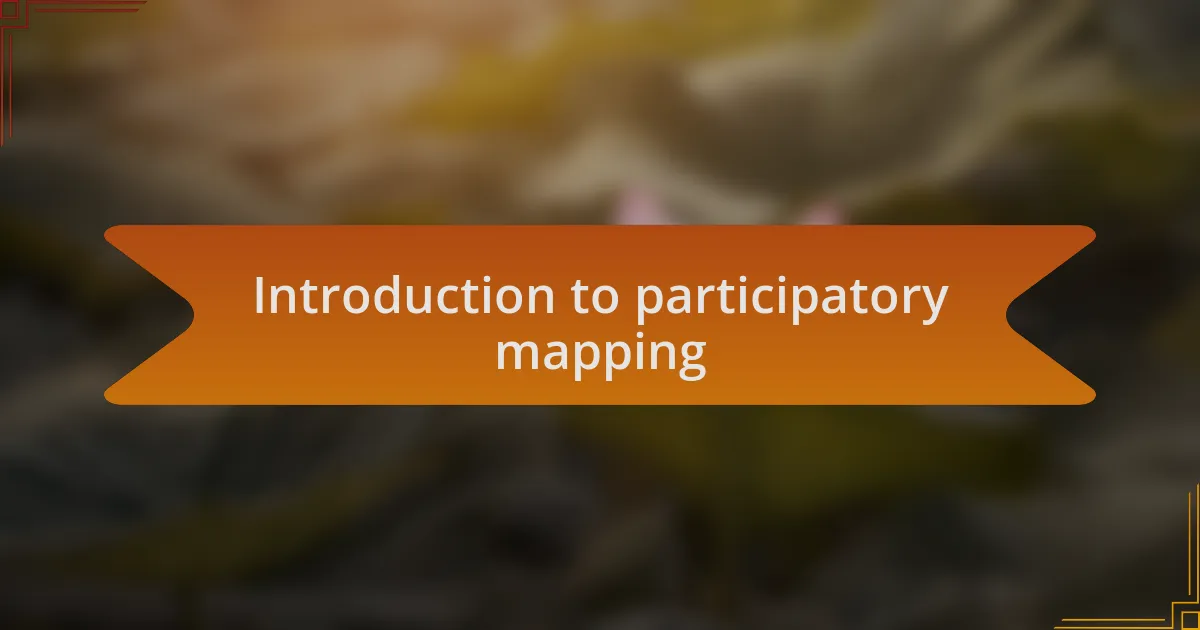
Introduction to participatory mapping
Participatory mapping is a collaborative process that allows individuals and communities to contribute to the creation of maps that reflect their knowledge and experiences. I remember working on a local project where community members shared their insights about land uses, which helped us create a more accurate representation of their environment. It’s fascinating to see how diverse perspectives can lead to richer maps that truly emphasize the culture and needs of a community.
What intrigues me about participatory mapping is its potential to empower people. By involving locals in the mapping process, we not only recognize their expertise but also foster a sense of ownership over their land and future. Have you ever thought about how different people’s experiences can shape a shared understanding of a place? In my experience, this engagement not only enhances the quality of the data collected but also strengthens community bonds.
This method goes beyond mere cartography; it’s about storytelling and connection. Each map becomes a canvas for the community’s narrative, painting their reality through their eyes. I once attended a workshop where participants used interactive tools to depict not just physical landscapes, but also the emotions tied to various locations. The result was more than just a map—it was a testament to their collective identity and history. This duality of function and feeling makes participatory mapping profoundly impactful.
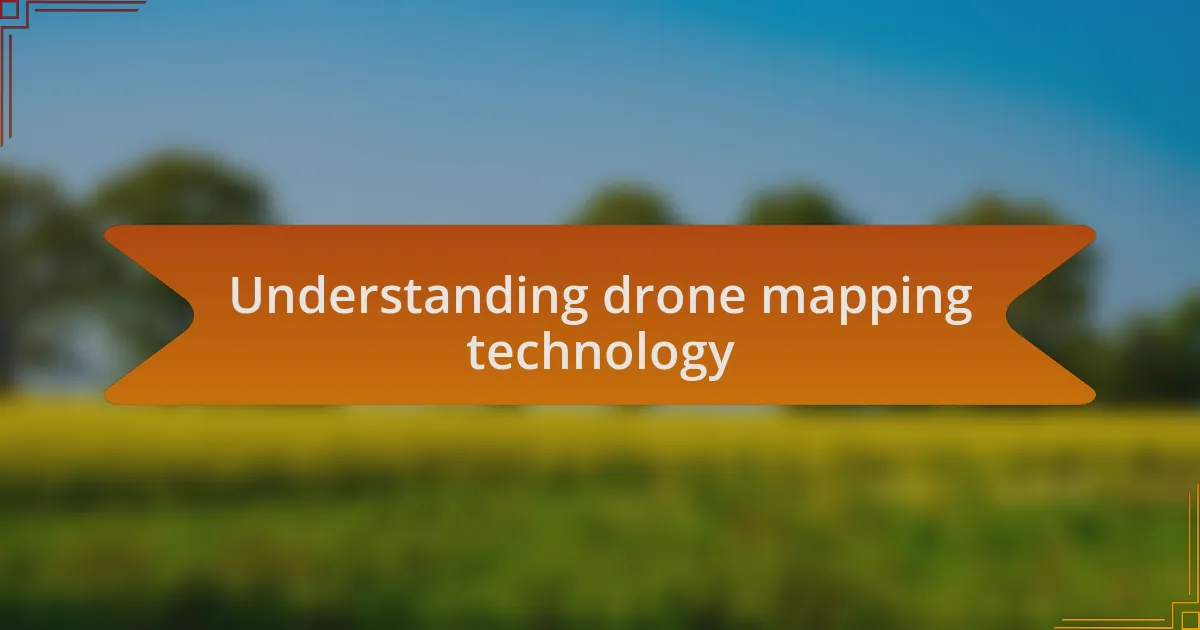
Understanding drone mapping technology
Understanding drone mapping technology has become essential in our data-driven world. Drones equipped with advanced cameras and sensors can capture detailed aerial imagery and gather data in a fraction of the time it would take traditional methods. When I first saw drone mapping in action during a conservation project, I was struck by how quickly we could visualize landscapes and monitor changes—it’s almost like having a bird’s-eye view of the world.
Not only does drone mapping streamline the data collection process, but it also improves accuracy. I was amazed at the precision of the images captured; each pixel tells a story, revealing elevations, vegetation types, and even structural changes over time. The ability to integrate this imagery with Geographic Information Systems (GIS) makes it incredibly powerful for decision-making. Have you ever thought about how understanding physical changes can inform our planning and management efforts?
The technology also opens up exciting possibilities in participatory mapping. When I paired drone data with community input, the results were transformative. It was eye-opening to see how community members interacted with the maps we created together. They could identify areas for improvement or propose new projects, bridging the gap between technology and local knowledge in a way that felt truly collaborative and inspiring.
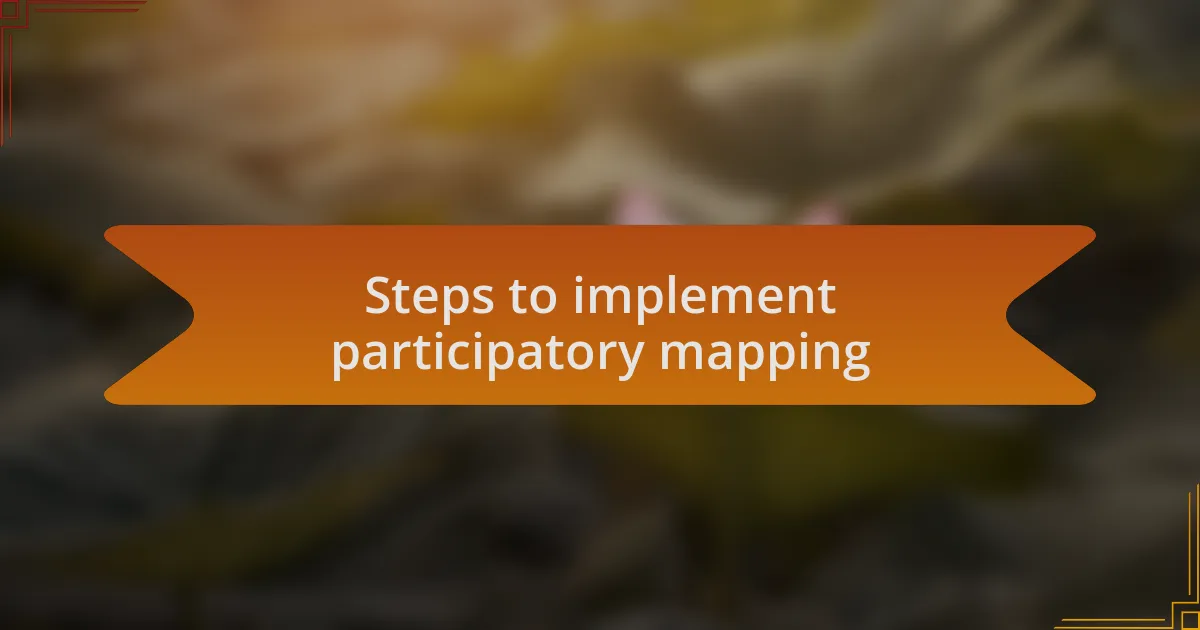
Steps to implement participatory mapping
To implement participatory mapping effectively, the first step is to engage the community. In my experience, holding initial discussions with local residents helps build trust and encourages participation. Have you ever noticed how people become more invested when they feel their voices matter? This inclusive approach often leads to richer data and insights.
The next step involves training participants on the use of mapping tools and techniques. I once facilitated a workshop where locals learned to use simple mapping software. It was amazing to see their confidence grow as they discovered how to visualize their knowledge of the land! Effective training not only empowers community members but also ensures they can contribute meaningfully to the mapping process.
Finally, it’s essential to iterate and refine the mapping process based on community feedback. After presenting the initial maps I created with a group, they shared their thoughts on adjustments. Their insights were incredibly valuable, leading to a more accurate representation of their needs and aspirations. Have you thought about how this kind of collaboration can strengthen community bonds? By embracing feedback, participatory mapping creates a dynamic dialogue that evolves with the community.
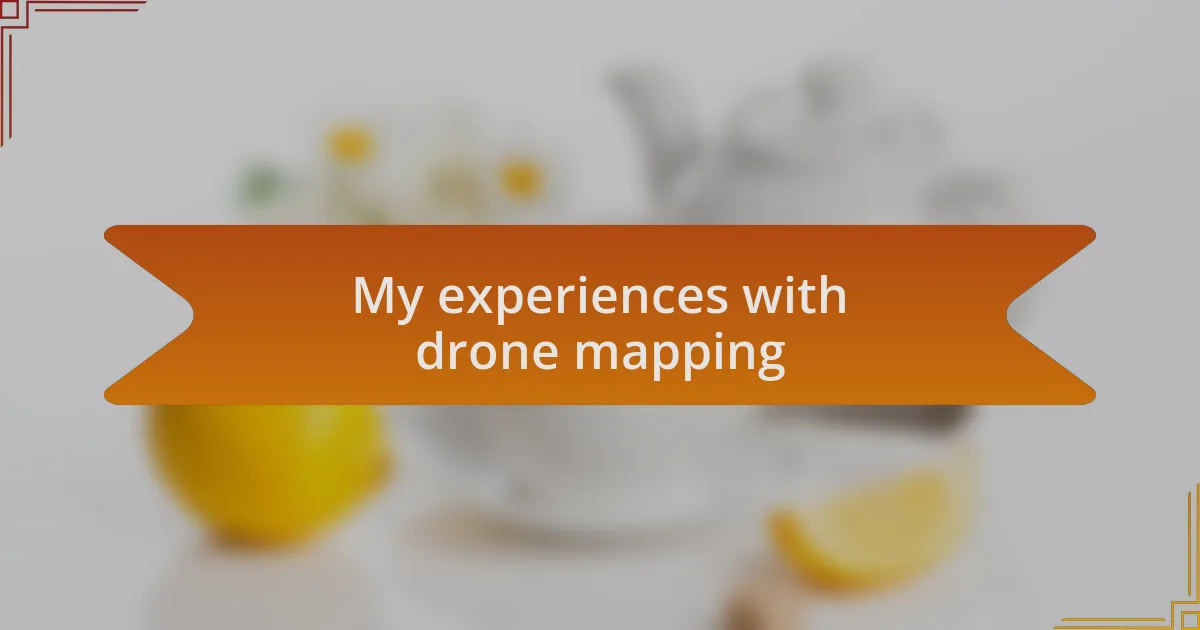
My experiences with drone mapping
Drone mapping has been a transformative experience for me. One vivid moment I recall was when I piloted my first drone over a stunning coastal area in Zanzibar. The view from above was breathtaking, and as I captured high-resolution images, I felt a sense of connection to the landscape that I couldn’t have imagined before. Isn’t it fascinating how technology can bridge the gap between human perspective and the vastness of nature?
In another instance, I worked closely with a group of local fishermen to map their fishing grounds. It was remarkable to see them point out areas that were crucial for their livelihoods, sharing stories tied to each location. I remember feeling a deep appreciation for their intimate knowledge of the sea; can you feel that connection when people share their lived experiences? It was a powerful reminder of the importance of integrating local knowledge into mapping efforts.
I also faced challenges along the way, particularly with weather conditions. During one mapping session, unexpected rain disrupted our plans, leaving me feeling frustrated. Yet, this setback sparked an impromptu discussion with the community about their weather experiences and adaptation strategies. It dawned on me that even in obstacles, there can be opportunities for growth and shared understanding. Have you ever noticed how challenges can lead to unexpected insights? These moments continue to shape my perspective on the value of drone mapping in community engagement.
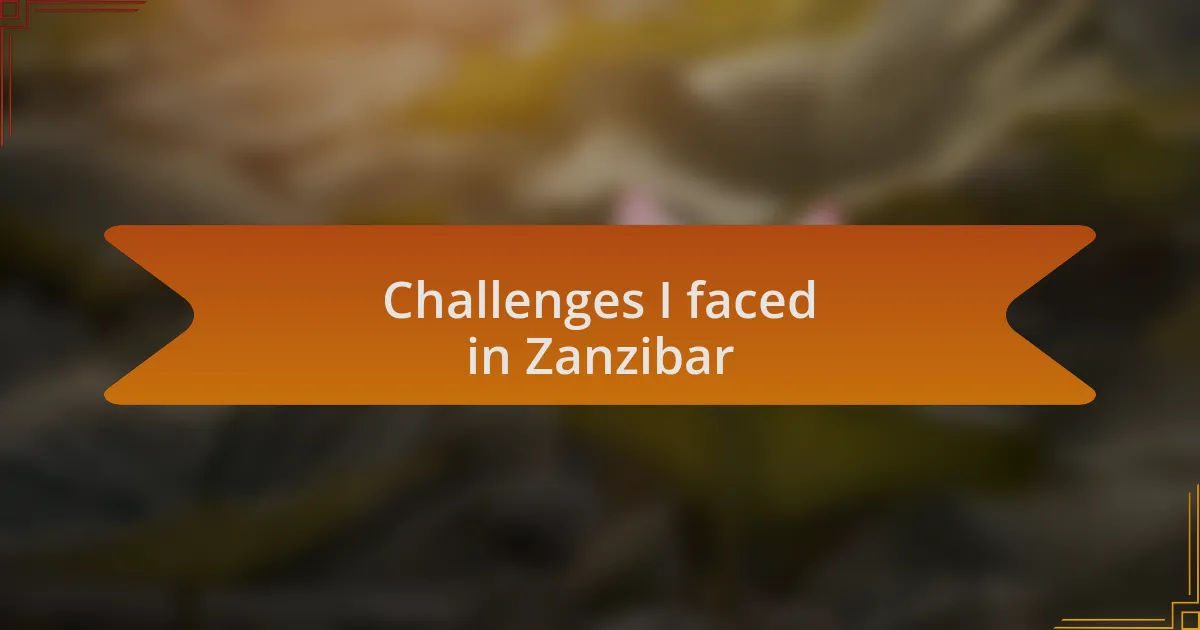
Challenges I faced in Zanzibar
During my time in Zanzibar, one of the most significant challenges I encountered was understanding the local regulatory landscape. Navigating permits and permissions for drone flights was harder than I anticipated. I vividly remember waiting in long queues, feeling that mix of impatience and determination—have you ever experienced that? It’s a reminder that persistence is key, especially in unfamiliar territories.
Connectivity also posed a significant hurdle. I often struggled with inconsistent internet access while trying to upload and process mapping data in real-time. There were moments when I sat on a log, laptop balanced on my knees, mentally negotiating with the universe for just a moment of stable connection—can you relate to that feeling of being held back by technology? It made me appreciate how crucial reliable communication is in our work.
Additionally, I found that engaging with the local community required a delicate balance of respect and trust. There were instances where skepticism about technology lingered, which made me reflect on my approach. I recall a conversation with a community elder who questioned the purpose of drone mapping in their lives. This dialogue pushed me to rethink my methods and emphasize the community’s voice, highlighting that true integration must come from understanding their values and concerns. How often do we let preconceived notions cloud our interactions with others?